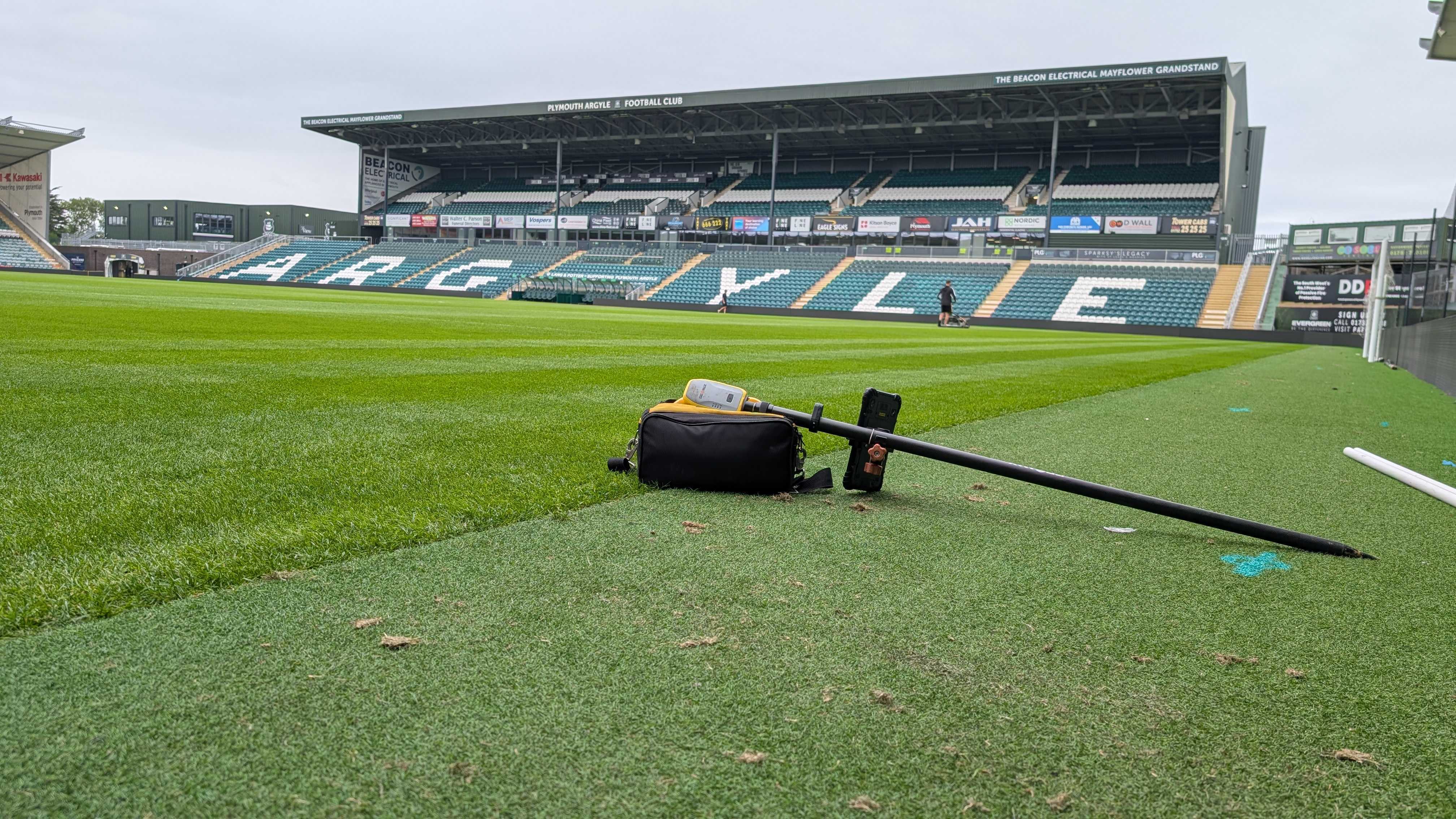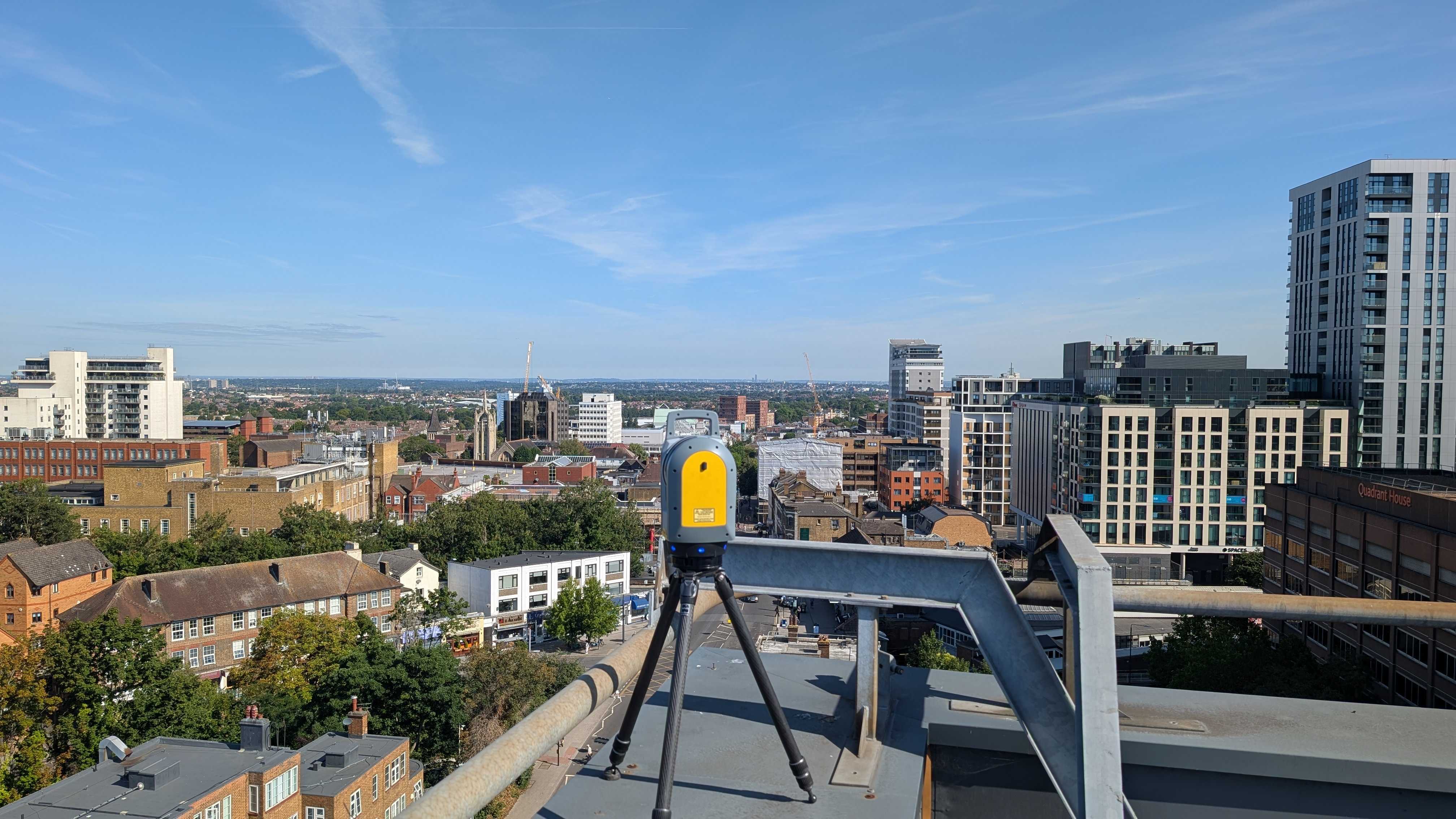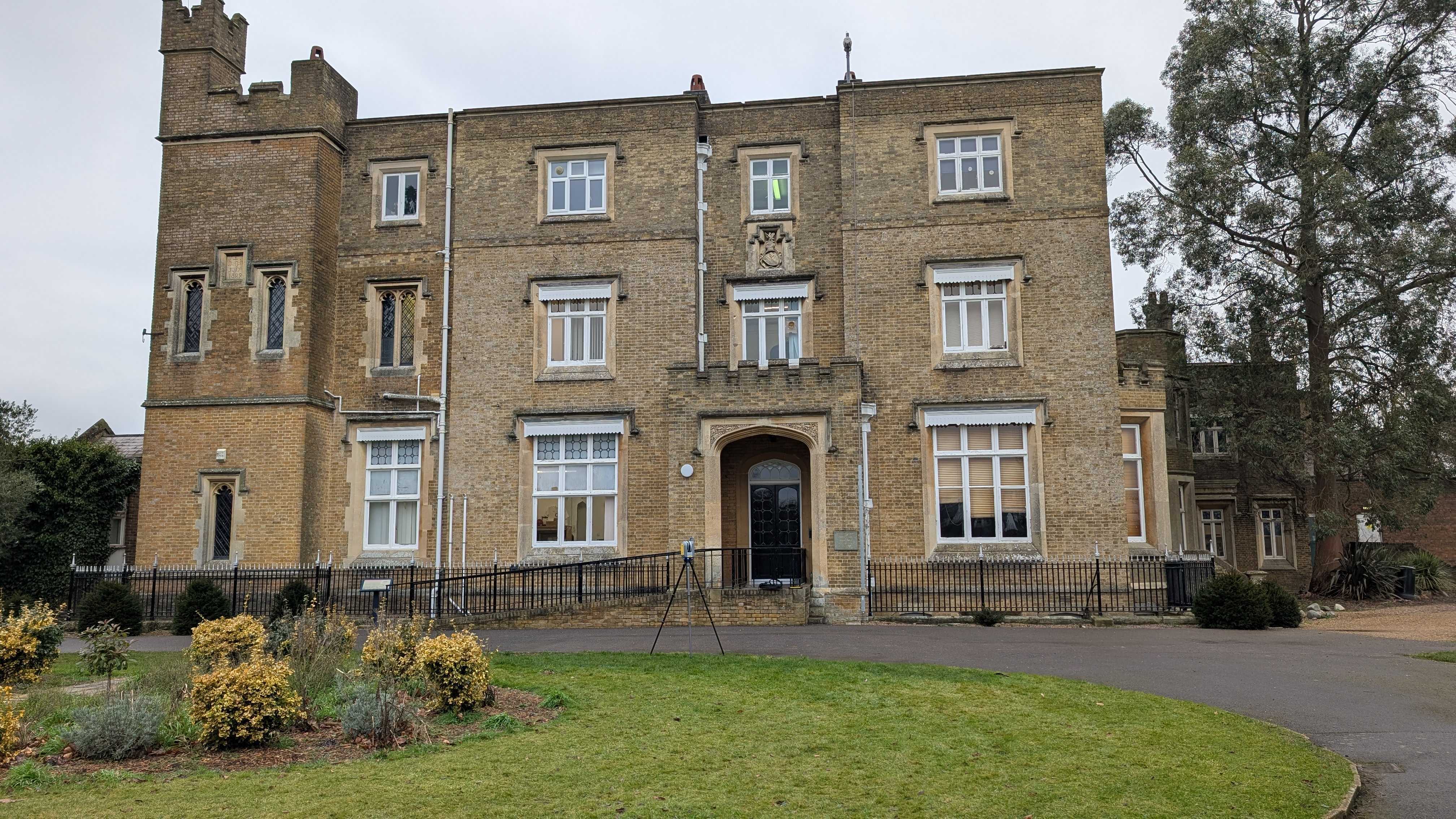Every construction or infrastructure project faces one unavoidable risk: what lies beneath the surface. A single utility strike can shut down operations, create safety hazards, and cost thousands in fines or repairs. That’s why accurate subsurface mapping is critical before any ground is broken. At Intersect Surveys, we specialise in helping clients make informed decisions through the use of GPR Survey technology, a non-intrusive method that provides clarity, safety, and confidence.
But how does a GPR Survey truly compare to traditional excavation methods? Which delivers the most efficiency, accuracy, and long-term value? This article examines both approaches in detail, offering a clear view of where each excels and where one clearly stands ahead.
What Is a GPR Survey?
Understanding Ground Penetrating Radar
A GPR Survey, or Ground Penetrating Radar survey, is a non-intrusive geophysical method that uses radar pulses to image the subsurface. It works by sending high-frequency radio waves into the ground. When these waves encounter buried objects or materials with differing dielectric properties, they reflect signals back to a receiver. This data is then visualised to produce detailed maps of what lies beneath.
Unlike older locating methods that depend on physical digging, a GPR Survey delivers rapid results without disturbing the site. It’s widely used to identify buried utilities, voids, foundations, and changes in soil structure across construction, utilities, transport, and environmental sectors.
Capabilities and Practical Use
A GPR Survey can detect metallic and non-metallic utilities such as PVC, plastic, and clay pipes that conventional metal detectors miss. It is also effective for locating voids, rebar, and other structural features. Because it can cover large surface areas quickly, it’s particularly valuable in pre-construction planning and risk assessments.
However, it does have limits. In areas with clay-rich or saline soils, radar signals can weaken. Skilled interpretation is required to differentiate between noise and meaningful reflections. When used correctly, though, its accuracy is exceptional and forms a reliable first step before any excavation begins.
What Is Traditional Excavation?
Definition and Approach
Traditional excavation involves physically digging into the ground to expose and identify buried materials, cables, or pipelines. It can be carried out manually or with mechanical equipment such as backhoes or excavators. Test pits, trenches, and probes are often used to inspect specific areas.
Advantages and Drawbacks
The primary advantage of excavation is direct verification. There’s no substitute for physically seeing the buried utility or structure. It also allows for sampling materials or validating soil conditions where necessary.
The drawbacks, however, are significant. Excavation is time-intensive, requires extensive safety protocols, and can disrupt site operations. It also generates spoil that must be removed or replaced. Most importantly, traditional excavation introduces risk, every dig carries potential for damage to unknown assets.
Comparing GPR Survey and Traditional Excavation
Safety and Risk Reduction
Safety is the foremost reason many organisations prefer a GPR Survey. It’s entirely non-intrusive, reducing the risk of damaging buried assets or injuring workers. By mapping underground utilities before a dig, teams can plan with precision and confidence.
Traditional excavation, on the other hand, exposes crews to greater hazards. Blind digging or relying on outdated plans often leads to costly utility strikes. A GPR Survey mitigates these risks at the planning stage rather than during the excavation itself.
Speed and Project Timelines
A GPR Survey can cover large areas in hours rather than days. Once data is collected, interpretation and mapping can be completed quickly. This makes it ideal for projects with tight schedules or where downtime must be avoided.
Excavation requires equipment mobilisation, manual labour, and reinstatement of the ground, a process that may extend over several days or even weeks. The difference in time can directly influence project profitability.
Cost and Resource Allocation
The financial case for a GPR Survey is straightforward. Because it avoids unnecessary digging and reduces potential damage, it saves both labour and remediation costs. The expense of one utility strike can easily surpass the entire cost of a complete site GPR Survey.
Excavation, by contrast, demands machinery, skilled operators, and disposal logistics. When multiplied across large projects, the costs can escalate quickly.
Accuracy and Coverage
A GPR Survey offers continuous subsurface imaging, enabling teams to visualise patterns and anomalies across entire sites. This comprehensive view is not possible through point-based excavation. It reveals features that might otherwise remain hidden between trenches.
Excavation, while exact in the specific location dug, provides limited coverage. It’s impossible to expose every square metre, so unseen utilities may still remain. That’s why many projects combine both methods, using a GPR Survey to map, and targeted excavation to confirm.
Disruption and Environmental Impact
Because a GPR Survey does not disturb the ground, it leaves the site intact. There’s no spoil, erosion, or contamination, and operations can continue during the process. This makes it ideal for sensitive environments such as heritage sites, roadways, or operational facilities.
Traditional excavation is inherently disruptive. It affects surface integrity, requires site reinstatement, and can create noise and dust. In urban or high-traffic zones, this can delay progress and increase public inconvenience.
When a GPR Survey Is the Better Choice
A GPR Survey is most effective in the following scenarios:
- Urban projects where underground congestion makes excavation risky
- Sites with restricted access or limited space for machinery
- Projects that require fast, detailed subsurface data
- Areas where risk mitigation is part of compliance or insurance requirements
- Pre-planning stages where mapping is essential for accurate design
By delivering accurate insights early, a GPR Survey prevents reactive problem-solving later in the project, protecting both time and budget.
When Traditional Excavation Still Has Its Place
Although technology has advanced, excavation remains relevant under certain conditions:
- When soil conditions interfere with radar signals
- For projects demanding deep investigation beyond radar penetration
- When physical samples are needed for geotechnical analysis
- During final verification before construction commences
Traditional excavation should be viewed as the final confirmation stage rather than the starting point. When paired with a GPR Survey, it provides the best of both accuracy and certainty.
The Hybrid Strategy: Combining GPR Survey and Selective Excavation
The most efficient and safest approach is to integrate both methods. Many successful infrastructure and utility projects now use a hybrid model:
- Conduct a GPR Survey to map subsurface features.
- Identify areas of interest or anomalies.
- Perform limited excavation in those precise zones.
This method eliminates unnecessary digging and allows for efficient allocation of resources. It enhances accuracy while maintaining safety and cost control.
Unique Facts and Industry Insights
- According to field research, a GPR Survey can complete mapping up to 70% faster than equivalent excavation work.
- Studies show GPR systems can detect both metallic and non-metallic utilities, something standard detectors often fail to achieve.
- Robotic GPR applications have demonstrated image resolution improvements of around 30% over traditional survey methods.
- In many urban projects, GPR Surveys have reduced unplanned excavation costs by up to 40%, based on comparative assessments from industry case reviews.
These facts underline the measurable advantages of modern radar-based surveys for asset mapping and construction planning.
Best Practices for Implementing GPR Surveys
A professional GPR Survey should follow a structured process to ensure accuracy:
- Assess site conditions: Evaluate soil type and conductivity to confirm radar suitability.
- Select correct antenna frequency: Match depth and resolution needs to antenna choice.
- Calibrate and test equipment: Ensure data consistency and minimise false readings.
- Integrate existing utility data: Cross-reference radar maps with historical records.
- Validate key findings: Where necessary, confirm anomalies through selective excavation.
- Document everything: Deliver clear, accessible reporting with interpreted results.
Following these steps ensures both safety and compliance across all stages of site work.
Addressing Common Questions
Can GPR work in all soil types?
Signal quality can vary with soil conductivity. High-clay or saline environments may reduce depth penetration. A professional assessment before surveying is essential.
How accurate is depth estimation?
With correct calibration, a GPR Survey typically achieves depth accuracy within 10–15%. Results can vary depending on soil composition and signal clarity.
Is GPR suitable for small projects?
Yes. Even minor projects benefit from reduced risk and faster turnaround. It’s particularly effective when working near known utilities.
Does GPR completely replace excavation?
Not entirely. It complements excavation by identifying where to dig safely and efficiently.
Who should interpret GPR data?
Qualified specialists must handle data interpretation. Expertise is crucial for distinguishing between material boundaries, voids, and potential utilities.
Key Takeaways
- A GPR Survey is safer, faster, and more efficient than traditional excavation for most surface-level and moderate-depth investigations.
- Excavation still plays an important role in validation and deep inspections.
- Combining both methods provides the most accurate and cost-effective solution.
- Early investment in GPR Survey services prevents accidents, downtime, and repair costs.
- For compliance-driven industries, radar surveying supports documentation and due diligence.
Ready to Make Smarter Subsurface Decisions?
Subsurface uncertainty is one of the most expensive risks in any project. A GPR Survey eliminates the guesswork by revealing what lies beneath before work begins.
At Intersect Surveys, we help organisations across construction, utilities, and infrastructure sectors gain confidence through accurate underground mapping and reporting. Our team ensures every site is assessed with precision and professionalism, reducing risk while saving both time and cost.
Schedule a consultation with Intersect Surveys to discuss your site requirements and plan your next GPR Survey efficiently and safely.







